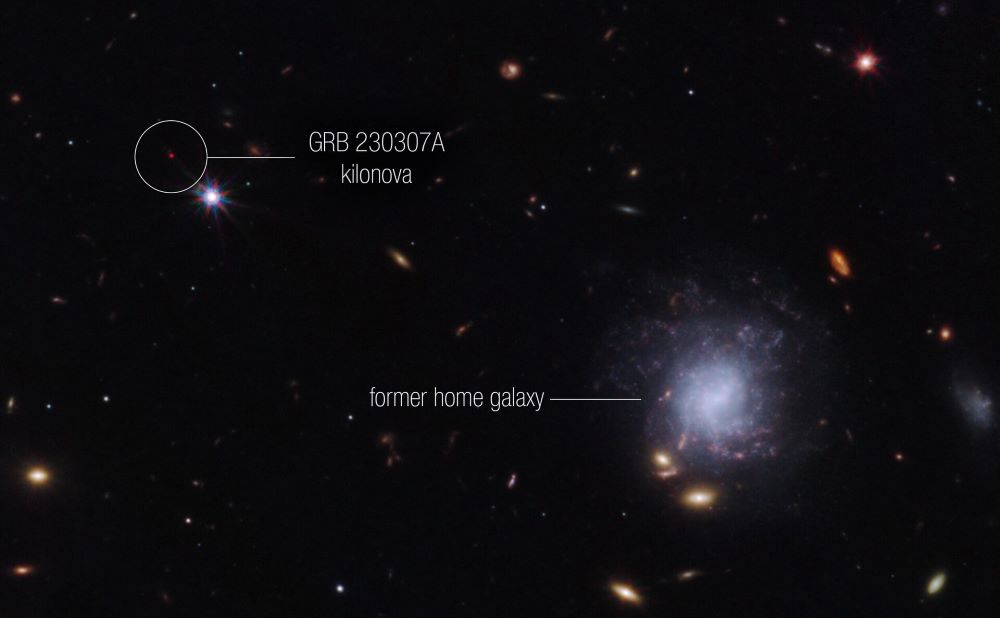A recent study published in Nature investigates recent observations from NASA’s James Webb Space Telescope (JWST) and ground-based telescopes of heavy elements within the ejected material of a recent gamma-ray burst (GRB), classified as GRB 230307A, that was likely produced by a kilonova with GRB 230307A being designated as the second-brightest GRB ever detected. The heavy element in question is the chemical element tellurium, which is classified as a metalloid on the periodic table. However, scientists also hypothesize that the element iodine, which is a requirement for most of life on the Earth and classified as a reactive nonmetal, could also exist within the kilonova’s explosion, with both elements residing side-by-side on the periodic table.
Continue reading “JWST Confirms the Formation of Heavy Elements in a Kilonova”JWST Confirms the Formation of Heavy Elements in a Kilonova


